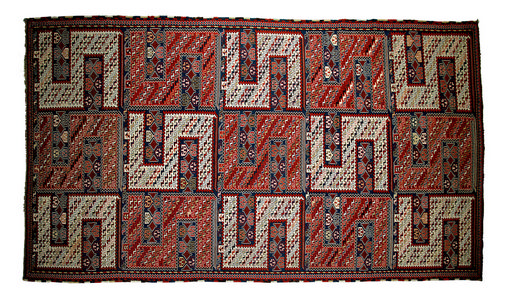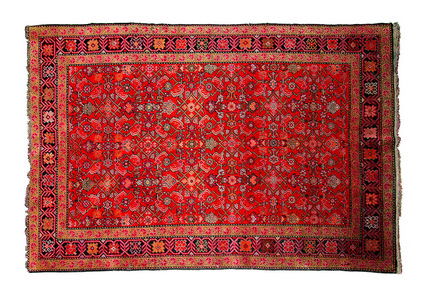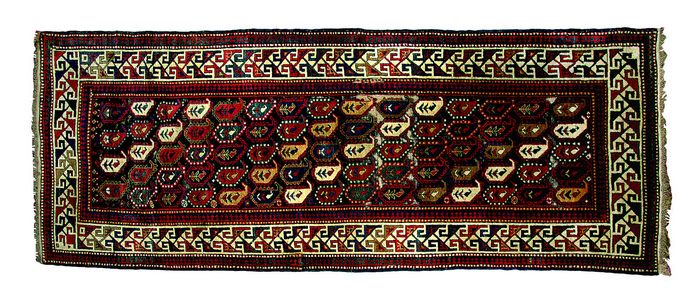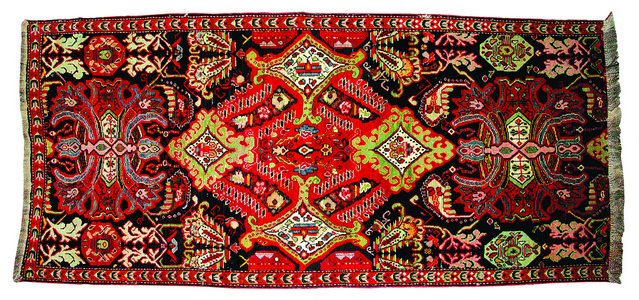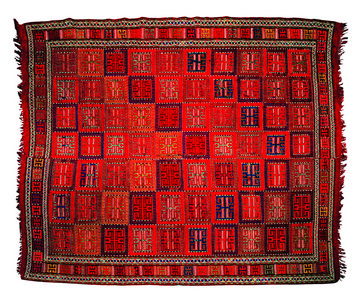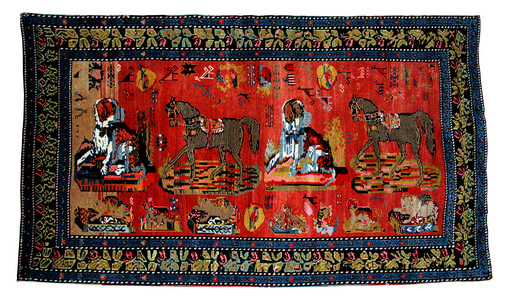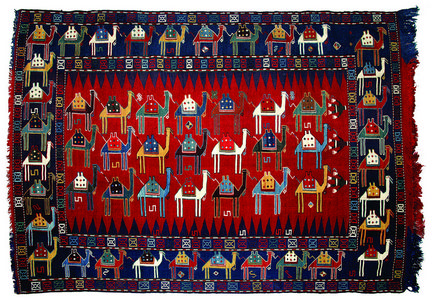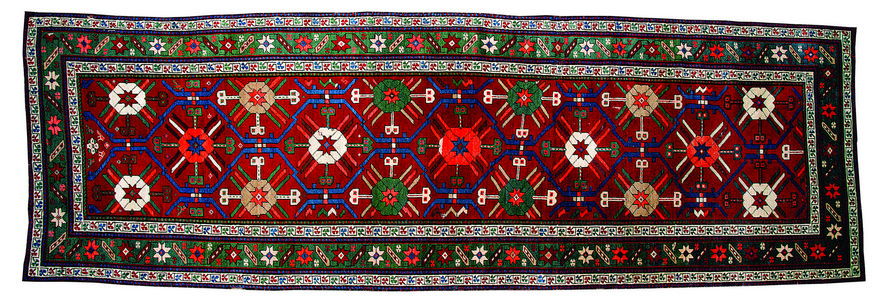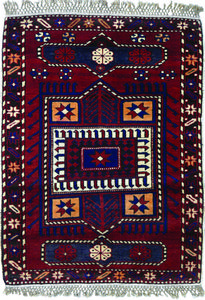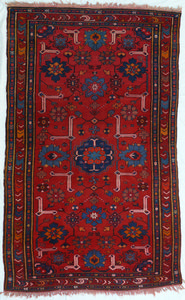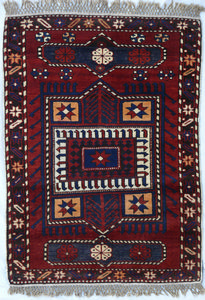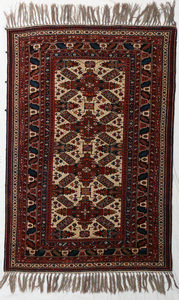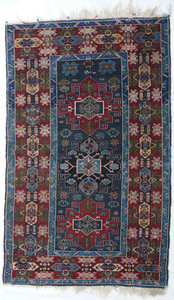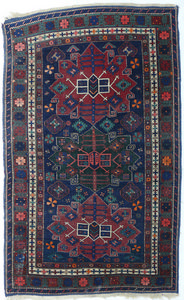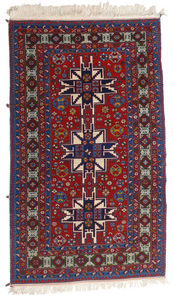Azerbaijan's carpet-weaving art
The history of carpet weaving art in Azerbaijan is quite ancient. Weaving tools of the Eneolithic period and loom parts, carpet and palas (carpet type not framed by a border) remains of the Early Middle Ages found in Mingachevir, show that carpet weaving has played an important role in the life of the Azerbaijani people since ancient times.
The development of carpet-weaving art in Azerbaijan was directly related to the richness of raw materials. Sheep and camel wool were the main ones used for weaving the carpets, and sometimes the carpets were woven from silk as well.
According to the weaving technique, the carpets are divided into two groups - pile and lint-free carpets. Piled carpets were composed of elements of different shapes. The carpets are woven with the knot technique. At present, carpet weaving schools in Azerbaijan can be classified under seven groups: Guba, Shirvan, Baku, Karabakh, Ganja, Gazakh and Tabriz. All these schools differ from each other in their typological and ornamental features. In almost all the schools (except Tabriz) ornamental patterns prevail. As for the Tabriz school, mostly thematic elements were used on typical carpets.
The Karabakh school, in turn, is divided into three subgroups.
Barda-Aghjabadi subgroup: This area was famous for such carpets as “Barda”, “Khangarvand”, “Aran”, “Goja”, “Chalabi”, “Buynuz”, “Daryanur”, “Achma-yumma”, “Shabalidbuta”, “Balig”, as well as shaddha, verni, zili carpets.
Shusha subgroup: This subgroup included “Malibayli”, “Lampa”, “Baghchada gullar”, “Bulud”, “Flowers in pottery”, “Nalbakigul”, “Gullu-yayliq”, “Munjuq” and “Zarmakhmar” carpets, which gained wide fame.
Jabrayil subgroup: This group included the following famous types of carpets: “Khanlig”, “Garagoyunlu”, “Gubadli”, “Kurd”, “Gasimushaghi”, “Bahmanli”, “Mughan” and “Talish” carpets.
The Guba group’s “Gollu Chichi”, “Gimil”, “Gadim Minara”, “Hajigayib”, “Alpan”, “Sirt Chichi”, “Gonagkand”, “Orduj”, “Afurja”, “Salmasoyud”, “Pirabadil”, “Kohna chichi”,“Zeyva”, “Zaghli”,“Alikhanli ”, “Mollakamalli”, “Lajadi” ,“Herat- Pirabadil”, “Biliji ”, “Ugah” , “Charakh”, “Jack”, “Jimi”, “Khashi”, “Arsalan” carpets and sumakhs (carpets with wave-like patterns) are famous all over the world.
Shirvan carpet-weaving school includes “Shamakhi”, “Erjiman”, “Gobustan”, “Maraza”, “Nabur”, “Chukhanli”, “Jayirli”, “Jamjamli”, “Bijo”, “Gashed”, “Pirhasanli”, “Sor-sor”, “Shilyan ”, “Israfil”, “Hajigabul ”, “Shiralibey” carpets, kilims (carpets characterized by a slot-like gap (opening) around the geometrical patterns) and palases with different patterns.
“Baku”, “Khilabuta”, “Khilaafshan”, “Surakhani”, “Novkhani”, “Goradil”, “Gala”, “Fatmayi”, “Findighan”, “Gadi” carpets and zilis (carpets characterized by stylized forms of animals and vegetal elements) included in the Baku group are famous all over the world.
“Shikhli”, “Gazakh”, “Salahli”, “Kemerli”, “Demirchiler”, “Qaymagli”, “Goychali” carpets, “Dagkesemen”, “Oysuzlu”, “Borchali”, “Garayazi”, “Qachagan” comprise the Gazakh group.
“Garachop”, “Garagoyunlu” carpets and varnishes and bells from lint-free carpets, “Tabriz”, “Bakhshaish”, “Goravan”, “Heris”, “Lechekturunj”, “Afshan”, “Agajli”, “Ovchulug”, “Dordfasil”, “Ardabil”, “Sheikh Safi”, “Shahabbasi”, “Sarabi”, “Zanjan”, “Mir”, “Achma-yumma” and lint-free carpets are verni, palas, kilim and zili types.
Lint-free carpet types include kilim, palas, shadda, verni, jejim, zili and sumakh. Verni was woven in Barda, Agjabadi, Lanbaran, Agdam, Jabrayil, Fizuli and Kalbajar districts of Karabakh for centuries. Shaddas and vernis were mostly woven in Gazakh, Karabakh and Garadagh (Southern Azerbaijan).
Specific tools were used to weave the carpets. They included heve (sharp- ended pronged tool to strengthen knots on the carpet), a tokhmaq (large wooden hammer), a comb, a weft, a knife, and shears. Loom was one of the important lathes used in carpet weaving.
The collection of the National History Museum of Azerbaijan includes more than 750 carpets belonging to carpet schools. Carpets from different countries can also be found in the museum's collection.
